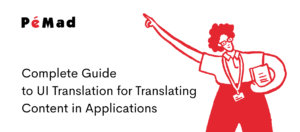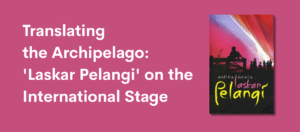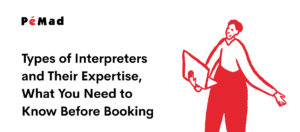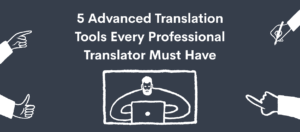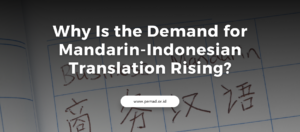In today’s professional landscape, where cross-lingual and cross-cultural collaboration is increasingly essential, the role of a translator goes far beyond simply converting text from one language to another. More importantly, a translator also bears significant responsibility for safeguarding the confidentiality of a client’s information. This is why a Non-Disclosure Agreement (NDA) is a critical document that cannot be overlooked in any professional translation project.
Whether you are a freelance translator, a translation agency, or a corporate client, understanding the purpose and function of an NDA is an integral part of professional ethics and long-term business protection.
Let’s take a closer look at what an NDA is, how it applies to translation projects, and why it deserves your careful attention.
Content :
ToggleWhat Is a Non-Disclosure Agreement (NDA)?
Simply put, a Non-Disclosure Agreement (NDA) is a legal contract between two or more parties that establishes certain information as confidential and prohibits its disclosure to third parties. In the context of translation projects, this information may include legal documents, commercial manuscripts, internal company data, strategic emails, or internal training materials.
Imagine being assigned to translate a marketing strategy document for a multinational corporation. By doing so, you automatically gain access to various types of information that may be considered trade secrets. Without an NDA, there is no clear legal obligation preventing you from disclosing that information. That’s where the importance of an NDA comes in.
An NDA covers several fundamental elements, such as:
- Identification of the parties involved
- The types of information considered confidential
- The obligations of the information recipient
- The duration of the agreement
- Exceptions for information not deemed confidential
An NDA is not merely a formality. In many cases, it represents a symbol of trust between the client and the translator and that trust is the most valuable asset in any professional relationship.
Why Is an NDA Important in the World of Professional Translation?
In professional translation services, you’re not just dealing with words, you’re also working with context, meaning, and sometimes highly sensitive business strategies. That’s why a Non-Disclosure Agreement (NDA) serves as a protective boundary, safeguarding both parties from the risk of information misuse.
There are several compelling reasons why an NDA is crucial in this industry:
1. Protecting Client Confidentiality
Most clients request translations for internal purposes, whether for legal matters, business expansion plans, or investor reporting. Naturally, they don’t want these documents to be leaked prematurely.
For instance, a company merger document or a product licensing contract that hasn’t been made public could become a ticking time bomb if it gets leaked. With a Client NDA in place, the translator has a legal obligation to safeguard such sensitive information with the utmost care.
2. Enhancing Professionalism and Credibility
If you’re a freelance translator, being familiar with working under NDAs can be a strong selling point. Clients will feel more secure and trust that you understand the importance of confidentiality.
Likewise, if you’re part of a translation agency, including the NDA signing process as part of your standard workflow can set you apart from competitors. It serves as concrete proof that you follow best practices in the industry.
3. Avoiding Legal Risks
Without an NDA, it becomes difficult to prove that a translator or client has breached an agreement regarding confidential information. An NDA provides a clear legal framework in the event of a violation, allowing for more structured and legally grounded dispute resolution.
This is also reflected in a 2023 survey conducted by the Chartered Institute of Linguists (CIOL), which involved over 2,800 freelance translators from 107 countries. The survey found that the majority of professional translators operate under formal contracts, including NDAs, especially when handling cross-border projects and work in strategic business sectors.
These findings indicate that the use of NDAs has become an industry standard, rather than merely an optional add-on.
Types of Information Commonly Protected in an NDA
An NDA isn’t just for safeguarding the documents of large corporations. Even smaller projects, such as translating internal emails or pitch presentations, can involve sensitive information. Here are some examples of information typically protected by an NDA in business translation:
- Marketing strategy plans
- Company financial data
- Legal documents such as agreements and contracts
- Product designs or patents
- Customer data or internal databases
- Unpublished book manuscripts
It is crucial for you to understand the context of the information you receive, especially when working on cross-border projects where data and privacy regulations may vary. For instance, documents from a European Union client may be subject to General Data Protection Regulation (GDPR) regulations, which adds an important layer to confidentiality.
NDA and the Translator’s Obligation: What Should You Pay Attention To?
As a professional translator, you need to understand that an NDA is more than just a signature on paper. It is a binding commitment that must be taken seriously. Therefore, before signing an NDA, you should pay close attention to the following points:
1. Read the Agreement Carefully
Never rush to sign an NDA without reading it thoroughly. Pay attention to the following:
- What information is classified as confidential?
- How long does the confidentiality obligation remain in effect?
- What are the penalties for breaching the agreement?
- Are you required to delete or return documents after the project is completed?
2. Do Not Store Information in Unsafe Places
Any information you receive must be stored using secure methods. Avoid saving files on public cloud storage without encryption or leaving them accessible on shared devices.
If necessary, use additional security software or encrypted file systems to protect client data.
3. Avoid Discussing the Project
Sometimes, the temptation to share details about a major project with colleagues or your community can arise. However, remember that information covered by an NDA must not be discussed with anyone, not even coworkers, unless you have written permission to do so.
What Should Clients Consider Before Sending an NDA?
As a client, you also have the responsibility to draft an NDA that is clear and reasonable. Here are a few key things to consider before sending an NDA to a translator:
1. Avoid Being Too Broad or Overly Complex
A common mistake in NDAs is making them too broad (treating all information as confidential) or too complicated, which can make it difficult for the translator to understand the terms. Use straightforward and specific language.
2. Include a Reasonable Duration
For example, you can state that the NDA remains valid for two years after the project ends. Avoid unrealistic clauses, such as lifetime restrictions, unless absolutely necessary.
3. Match the Scope to the Project
If you’re only sharing standard internal documents, an overly long and strict NDA might be unnecessary. However, for legal documents or business strategy materials, a more detailed NDA is definitely important.
It’s important to remember that an NDA actually protects both parties. Not only is the translator obligated to keep the client’s information confidential, but the client is also prohibited from using the translator’s work outside the agreed terms.
For instance, if a translated document is used for purposes beyond the original agreement, such as being commercially redistributed without the translator’s permission, it may be considered a copyright infringement. That’s why an NDA can include clauses on intellectual property rights to ensure both parties feel secure and treated fairly.
In professional translation projects, an NDA is a cornerstone of trust that must be upheld. It’s not just a contract, it’s a commitment to safeguarding a client’s confidential information to the highest standard.
For translators, signing an NDA demonstrates a readiness to work professionally and an understanding of the importance of integrity. For clients, providing an NDA reflects a responsibility to protect sensitive information and ensure a fair and transparent collaboration.
So, if you want your translation project to run smoothly, securely, and professionally, both technically and ethically, start by drafting or signing a clear Non-Disclosure Agreement.
With the growing exchange of information in today’s digital world, understanding the importance of NDAs in business translation is no longer optional, it’s an absolute necessity.
References:
https://www.ciol.org.uk/freelance-translator-survey-2023
https://montero-ls.com/en/the-role-of-ndas-in-translation/
https://www.tridindia.com/blog/how-legal-translators-ensure-confidentiality-and-data-security/

